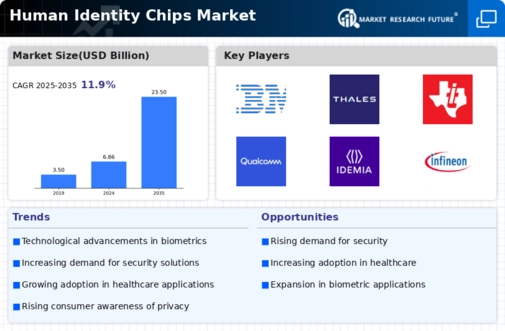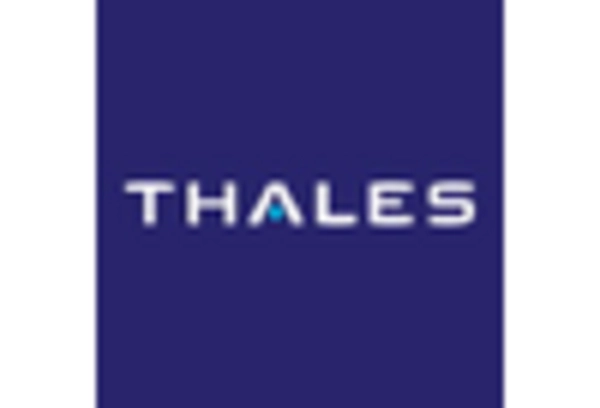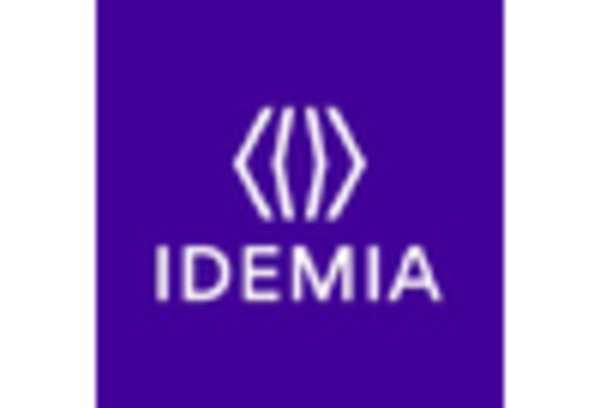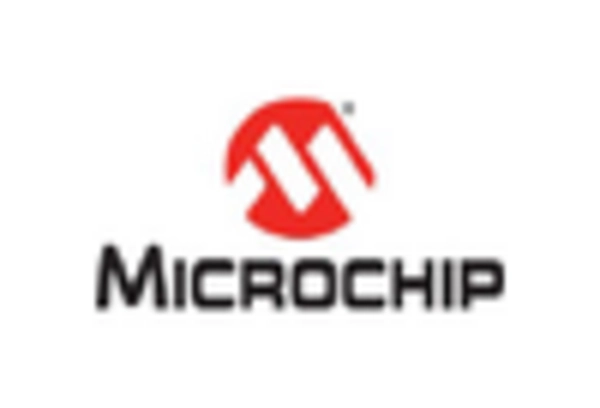Regulatory Compliance
The Human Identity Chips Market is significantly influenced by the evolving landscape of regulatory compliance. Governments and regulatory bodies are increasingly mandating the use of identity verification technologies to enhance security and streamline processes. For instance, regulations surrounding Know Your Customer (KYC) and Anti-Money Laundering (AML) are pushing financial institutions to adopt identity chips for customer verification. This compliance-driven demand is expected to propel the market forward, with estimates suggesting a compound annual growth rate of around 15% over the next five years. As organizations strive to meet these regulatory requirements, the Human Identity Chips Market is poised for expansion, as companies seek reliable solutions to ensure adherence to legal standards while enhancing operational efficiency.
Enhanced Security Measures
The Human Identity Chips Market is experiencing a surge in demand due to the increasing need for enhanced security measures across various sectors. Organizations are increasingly adopting identity chips to mitigate risks associated with unauthorized access and identity theft. In 2025, the market is projected to reach a valuation of approximately 5 billion USD, driven by the growing awareness of security vulnerabilities. The integration of biometric data with identity chips provides an additional layer of protection, making it difficult for malicious actors to compromise systems. This trend is particularly evident in sectors such as finance and government, where safeguarding sensitive information is paramount. As security concerns continue to escalate, the Human Identity Chips Market is likely to witness sustained growth, as businesses and institutions prioritize the implementation of advanced identity verification solutions.
Technological Advancements
The Human Identity Chips Market is being propelled by rapid technological advancements in chip design and functionality. Innovations such as miniaturization, increased storage capacity, and enhanced connectivity are making identity chips more versatile and appealing to various sectors. The integration of artificial intelligence and machine learning capabilities into identity verification systems is also enhancing their effectiveness. As technology continues to evolve, the market is expected to expand, with projections indicating a growth rate of around 12% annually. This evolution not only improves the performance of identity chips but also broadens their applications across industries, including healthcare, finance, and security. Consequently, the Human Identity Chips Market is likely to benefit from these advancements, as organizations seek to leverage cutting-edge technology for identity management.
Consumer Awareness and Acceptance
The Human Identity Chips Market is experiencing a shift in consumer awareness and acceptance regarding identity verification technologies. As individuals become more informed about the benefits of identity chips, such as enhanced security and convenience, the demand for these solutions is expected to rise. Surveys indicate that approximately 60% of consumers are open to using identity chips for personal identification, reflecting a growing trend towards embracing technology in everyday life. This increasing acceptance is likely to drive market growth, as businesses respond to consumer preferences by integrating identity chips into their services. The Human Identity Chips Market stands to gain from this trend, as organizations recognize the importance of aligning their offerings with consumer expectations and enhancing user experience.
Growing Demand in Travel and Immigration
The Human Identity Chips Market is witnessing a notable increase in demand within the travel and immigration sectors. As international travel resumes and immigration processes become more stringent, the need for efficient identity verification systems has become paramount. Identity chips are being integrated into passports and travel documents to facilitate seamless border control and enhance security measures. In 2025, the market for identity chips in travel is projected to grow by approximately 20%, driven by the need for faster processing times and improved security protocols. This trend indicates a shift towards more technologically advanced solutions in the travel industry, where the Human Identity Chips Market plays a crucial role in ensuring safe and efficient travel experiences.















Leave a Comment